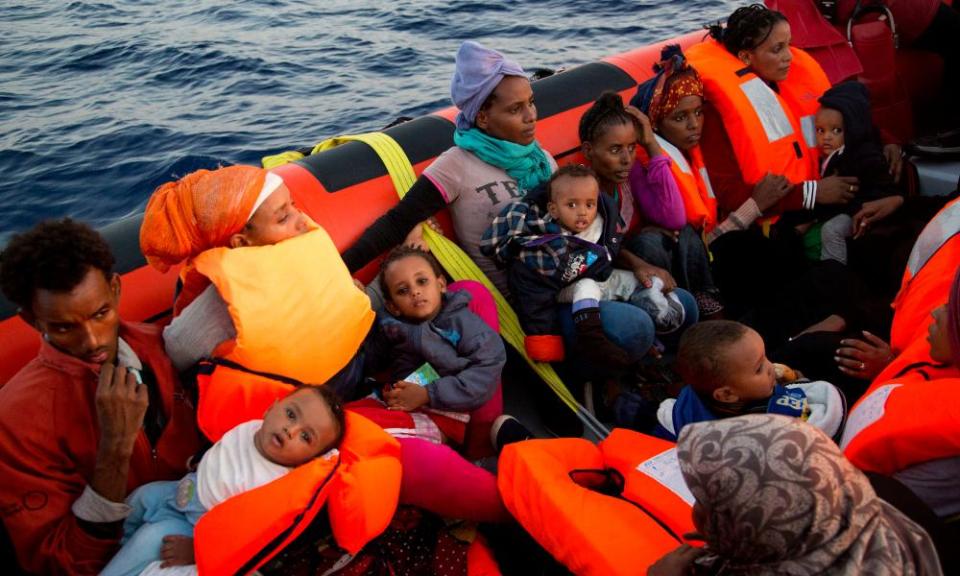European and African ministers discuss plan to tackle flow of refugees

European and African ministers are to meet in Tunis on Monday to discuss a plan to try to regularise the flow of refugees from Africa to Europe to about 20,000, coupled with a much tougher strategy to deport illegal migrants from Italy and break up smuggling rings.
The plan to regularise the migrant flow is being pushed by the UNHCR, the UN refugee agency, which warns that EU efforts to train the Libyan coastguard along with Italy’s intention to impose a new code of conduct on NGO rescue ships operating in the Mediterranean do not match the scale of the problem, or recognise the extent to which the flow of refugees and migrants is likely to become permanent.
The aim is to set up screening systems for EU-bound migrants in countries en route to Libya, such as Mali, Niger, Burkina Faso, Ethiopia, Chad and Sudan.
The EU at a meeting in July set aside enough cash for 40,000 regularised refugees, with as many as half coming from claimants in Syria, and the remainder from Africa. Although the European commission has struggled to persuade all countries to take migrants after a similar scheme set up in following the 2015 migration crisis from Syria, the new scheme would represent a form of solidarity, and provide Italy with some relief.
Italy is gripped by deep political and civil divisions on the issue, with more than 90,000 migrants reaching Italy from Libya this year. A reduction to 20,000 from Africa would represent a transformation.
Explaining the thinking, Vincent Cochetel, UNHCR’s new special envoy to the central Mediterranean, said: “We need to regularise the system and stop these dangerous journeys into Libya. Any remedy that focuses on trying to stop the flow of migrants at sea, such as a code of conduct for a NGOs, cannot be the solution. The issue has to be addressed earlier in the countries of origin and transit.
“Italy also needs to be able to process claimants so the economic migrants are returned much more quickly, or else there will be no deterrent to travel to Italy. Only a third of the migrants reaching Italy are found to be in need of international protection.”
He added that by the time migrants reached Libya it was often too late. It is thought there are 300,000 Africans from outside Libya trying to get across to Europe or to get some work in Libya. They are living in Libyan detention centres or in warehouses or so-called “connection houses” in the hands of traffickers. The refugees need to be taken out of Libya and these detention centres so they can be processed elsewhere.
He added: “There has been a lot of rhetoric about closing down the smugglers’ business model, but little has happened, but it has to be done more seriously than at present … Many of the people smugglers can be identified as they advertise their services on Facebook, but little has been done to try to seize their assets or impose travel bans and other sanctions.
“There tends to be action against the small fry, like the people that steer the boats to Libya in return for a discount on the journey. They are not the people responsible for this system.”
UNHCR recognises that it is necessary to train and capacitate the Libyan coastguards, but there is also a need to prevent human rights abuses and to investigate incidents of collusion with traffickers.
In the first six months of this year, 2,171 refugees and migrants died or went missing in the central Mediterranean, and many others are believed to have died trying to cross into Libya.

 Yahoo News
Yahoo News 